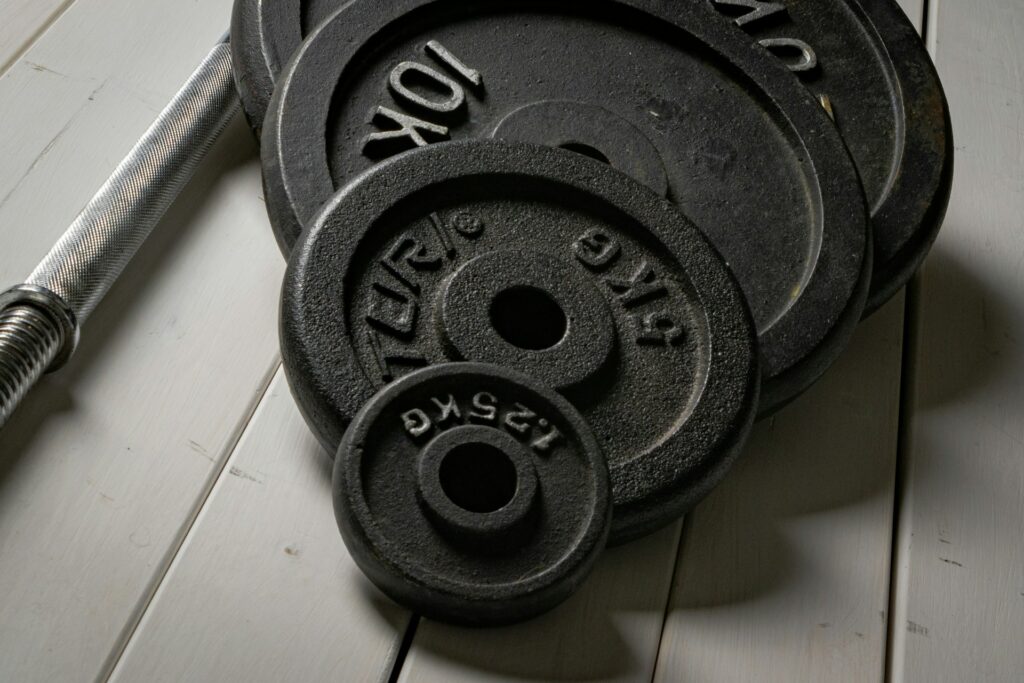When it comes to building strength, two training methods dominate the conversation: calisthenics and weightlifting. Both can get you strong, athletic, and muscular—but the approach, tools, and speed of progress can differ significantly.
So which one actually builds strength faster?
Let’s break down the comparison based on science, principles of strength training, and real-world application.
Definitions First: What Are We Comparing?
Calisthenics
Training that uses your body weight as resistance (e.g., pull-ups, push-ups, dips, pistol squats). Advanced moves include muscle-ups, handstand push-ups, and planches.
Weightlifting

Training that uses external weights (barbells, dumbbells, machines) to build muscle and strength. This includes compound lifts like bench press, deadlift, and squats.
Strength Defined: What Do We Mean by “Build Strength”?
Strength = the ability to exert force against resistance.
In practice:
- A one-arm pull-up = calisthenics strength
- A 200 kg deadlift = weightlifting strength
So we’ll evaluate based on:
- Maximal strength (how much you can lift or move once)
- Progressive overload (ability to increase resistance)
- Speed of progression
- Neural adaptations (nervous system efficiency)
- Muscle hypertrophy (muscle size contributes to strength)
Which Builds Strength Faster? Short Answer:
Weightlifting builds maximal strength faster, especially in the early stages.
Here’s why:
| Factor | Winner | Why |
|---|---|---|
| Load control | Weightlifting | You can increase resistance in small increments (2.5 kg plates) |
| Progressive overload | Weightlifting | Easily scalable with weights |
| Beginner gains | Weightlifting | Linear gains are fast with structured programs |
| Skill requirements | Calisthenics | More time needed to master form, mobility, leverage |
| Neural efficiency | Tie | Both train motor units, but barbell lifting leads to quicker gains in force output |
| Joint & tendon stress | Calisthenics | Lower initial stress and better joint control |
Detailed Breakdown
1. Progressive Overload
- Weightlifting: You can increase the load weekly, even daily in beginners.
→ e.g., Add 5 lbs to your bench press every week. - Calisthenics: You overload by altering leverage, range of motion, or reps.
→ e.g., Push-up → Archer push-up → One-arm push-up
✅ Advantage: Weightlifting — more predictable and faster load progression.
2. Strength Curve and Movement Efficiency
- Weightlifting focuses on moving external resistance in isolated or compound lifts.
- Calisthenics uses compound, full-body movements that often require balance, coordination, and mobility.
For a beginner looking for pure strength numbers, weightlifting is faster.
For relative strength and body control, calisthenics builds a stronger foundation over time.
3. Neuromuscular Adaptation
Both methods train your nervous system, but:
- Weightlifting allows quicker adaptation through max effort lifts and low reps
- Calisthenics involves more stability and joint control, often delaying max-force work
✅ Advantage: Weightlifting for faster force expression gains.
4. Muscle Mass and Strength
More muscle = more potential for strength.
- Weightlifting causes more immediate hypertrophy through high-volume training and load progression
- Calisthenics builds lean muscle over time but often plateaus unless advanced skills are mastered
✅ Advantage: Weightlifting for size-based strength gains.
5. Accessibility and Risk
- Calisthenics is joint-friendly, reduces injury risk, and builds structural strength.
- Weightlifting allows greater force production but comes with higher risk under poor form or ego lifting.
✅ Advantage: Calisthenics for longevity and joint health.
Which Should You Choose?
| Goal | Best Choice |
|---|---|
| Build maximum strength fast | Weightlifting |
| Get strong without equipment | Calisthenics |
| Improve athleticism and coordination | Calisthenics |
| Gain muscle mass quickly | Weightlifting |
| Bulletproof joints and core | Calisthenics |
| Compete in strength sports (e.g., powerlifting) | Weightlifting |
Can You Combine Both?
Absolutely. Some of the strongest athletes blend barbell training with calisthenics.
Example:
- Weighted pull-ups + deadlifts
- Push-ups + dumbbell bench
- Pistol squats + barbell squats
The combo helps maximize absolute strength, joint stability, and body control.
Final Verdict
| Category | Winner |
|---|---|
| Maximal Strength | Weightlifting |
| Joint Longevity | Calisthenics |
| Fastest Progression | Weightlifting |
| Functional Movement | Calisthenics |
| Skill & Control | Calisthenics |
So, which builds strength faster?
➡️ Weightlifting – especially in terms of absolute strength and early progression.
But don’t overlook calisthenics — it builds real-world strength, improves control, and complements weight training for a complete strength profile.
Pingback: Best Workout Split for Beginners: A Practical Guide Backed by Science - nattyexclusive.com